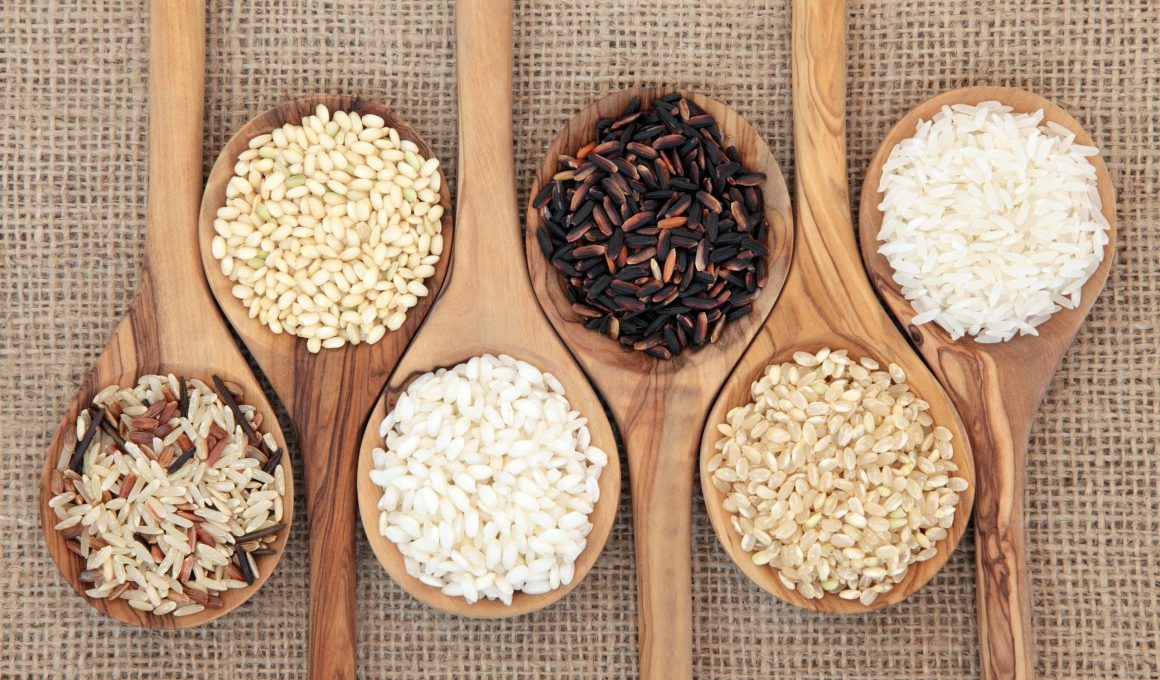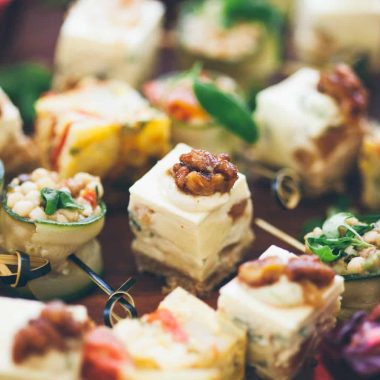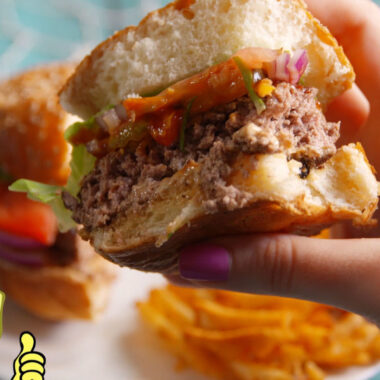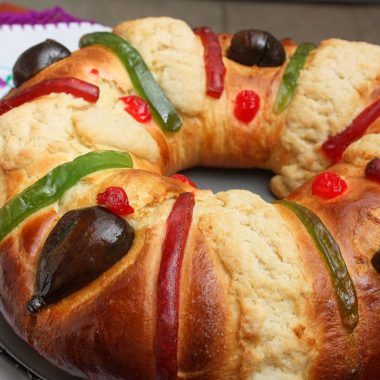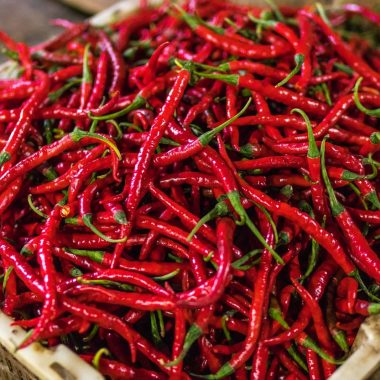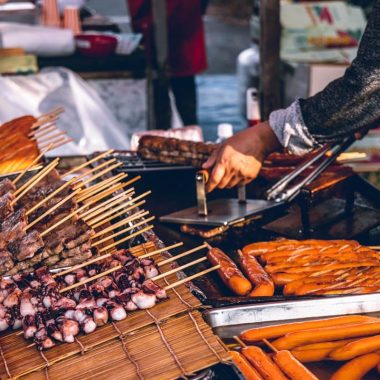Rice is a staple for more than half the world, showing up in everything from biryani to sushi.
Each variety has its quirks—texture, flavor, even how it behaves in the pot.
Getting a grip on the differences between long grain rice and medium grain rice can seriously up your kitchen game, making it easier to pick just the right one for whatever you’re cooking.
Honestly, the rice aisle can be a bit much—so many bags, so many names.
Indica types, which you’ll find in Indian or Thai food, tend to cook up dry and separate—ideal for fried rice and pilafs.
Others, like arborio, get creamy as their starches work their magic.
And if you’re looking beyond white rice, there’s always nutty brown rice—a solid pick if you want more fiber and nutrients in your meal.
Basmati Rice (Aromatic Long-Grain From India/Pakistan)
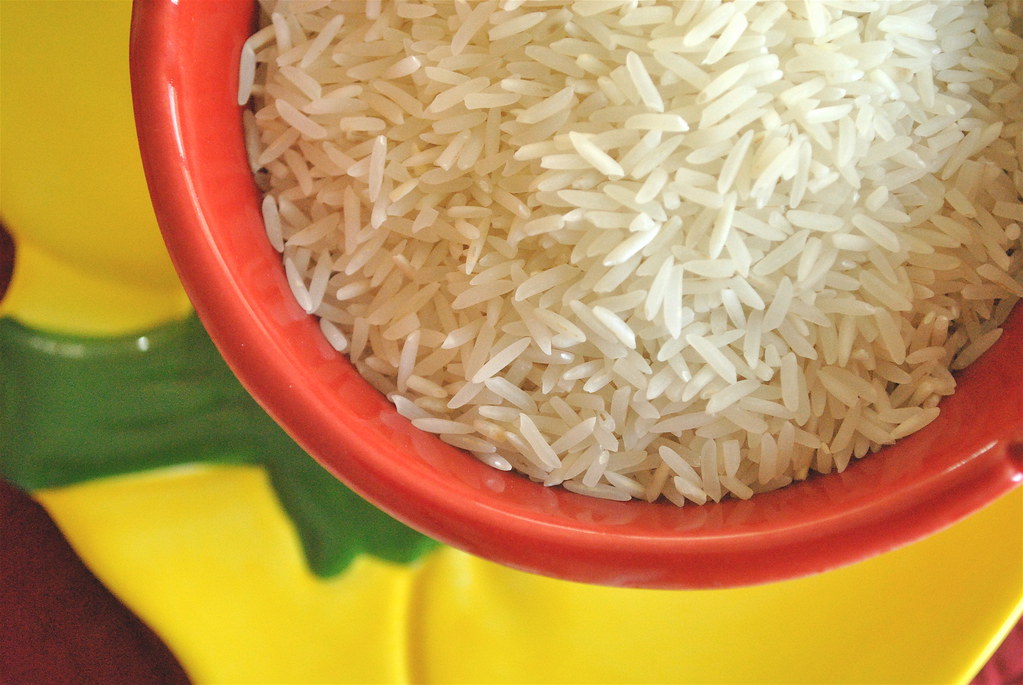
Basmati rice is a premium long, slender-grained aromatic rice from India and Pakistan.
The name actually comes from the Sanskrit “vasmati,” which just means fragrant—pretty fitting.
What sets basmati apart? It’s got that long, delicate grain, a nutty aroma, and it fluffs up beautifully—each grain staying separate after cooking, not a sticky mess.
Popular Varieties of Basmati Rice:
- Pusa Basmati 1121: Extra long, thin grains with a delicate flavor, one of India’s favorites
- Standard Basmati Rice: The classic, with that signature aroma
- 1121 Extra Long Grain: Known for its length and aroma, often saved for special meals
- Sela Basmati Rice: Parboiled, available in cream or golden, for a different texture
Basmati is the go-to for biryani, pulao, or just as an easy side with curries.
It soaks up flavors brilliantly, so it works for everyday dinners or when you’re trying to impress someone.
Rinsing is a must to wash off excess starch. A lot of cooks swear by soaking it for half an hour before cooking—supposedly helps with length and texture.
The best basmati? It’s usually aged for at least a year, which deepens the flavor and makes it cook up just right.
Jasmine Rice (Fragrant Long-Grain From Thailand)

Jasmine rice is a staple in Thai kitchens and beyond. Called Hom Mali in Thai, meaning “jasmine flower fragrance,” it’s got a scent that’s hard to ignore.
Some say it smells like popcorn when it’s cooking—sweet, floral, fills the whole kitchen.
Key Characteristics:
- Long grains
- Turns slightly sticky after cooking
- Light, fluffy texture
- Sweet, almost floral aroma
- Usually white, but brown versions exist
When you get it right, jasmine rice is fluffy but a little clingy—perfect for Thai dishes and Southeast Asian food in general.
Thailand’s the main source for the real deal, though you’ll find it elsewhere.
Thai Hom Mali Jasmine rice is the gold standard if you care about fragrance and texture.
Nutrition-wise, it’s mostly carbs. The white stuff is milled, but brown jasmine rice keeps more fiber and nutrients.
It goes great with curries, stir-fries, grilled meats—really, anything saucy.
That aroma adds a little something extra, but doesn’t take over.
Rinse before cooking to avoid gumminess. The sweet spot for water is about 1.5 cups per cup of rice—less than you might expect.
Arborio Rice (Italian Short-Grain For Risotto)
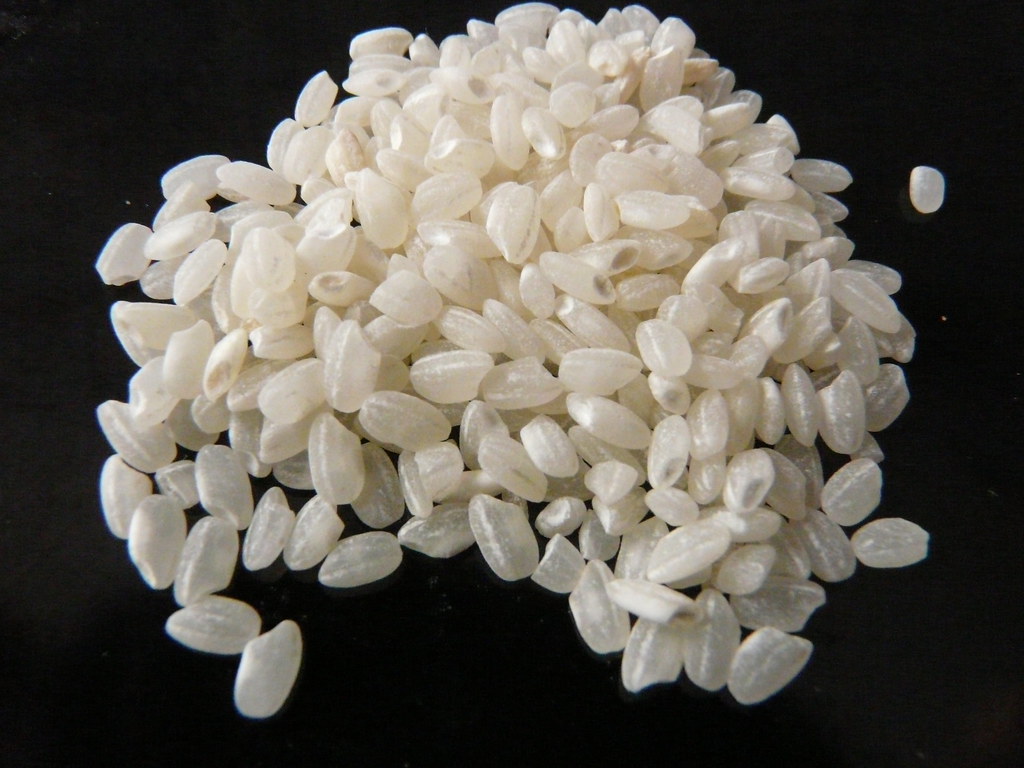
Arborio rice is the go-to medium-grain rice for Italian food, especially risotto.
It’s named after a town in Italy’s Po Valley, and it’s famous for being super starchy.
That starch is what gives risotto its creamy texture. The grains soften on the outside but keep a bit of bite—what Italians call “al dente.”
Key Characteristics of Arborio Rice:
- Short to medium grains
- Lots of starch
- Gets creamy when cooked
- Chewy center
- Bright white color
Arborio is everywhere, but it’s not perfect. It’s easy to overcook and go from creamy to mushy if you’re not paying attention.
The high starch content is what makes it so good for risotto—no need to add cream, just keep stirring and adding broth.
Risotto with Arborio takes patience. You add warm broth a bit at a time, stirring constantly to coax out that creamy goodness.
Besides risotto, Arborio works for rice pudding and arancini—any dish where you want things a little sticky and rich.
Carnaroli Rice (Premium Italian Rice For Risotto)
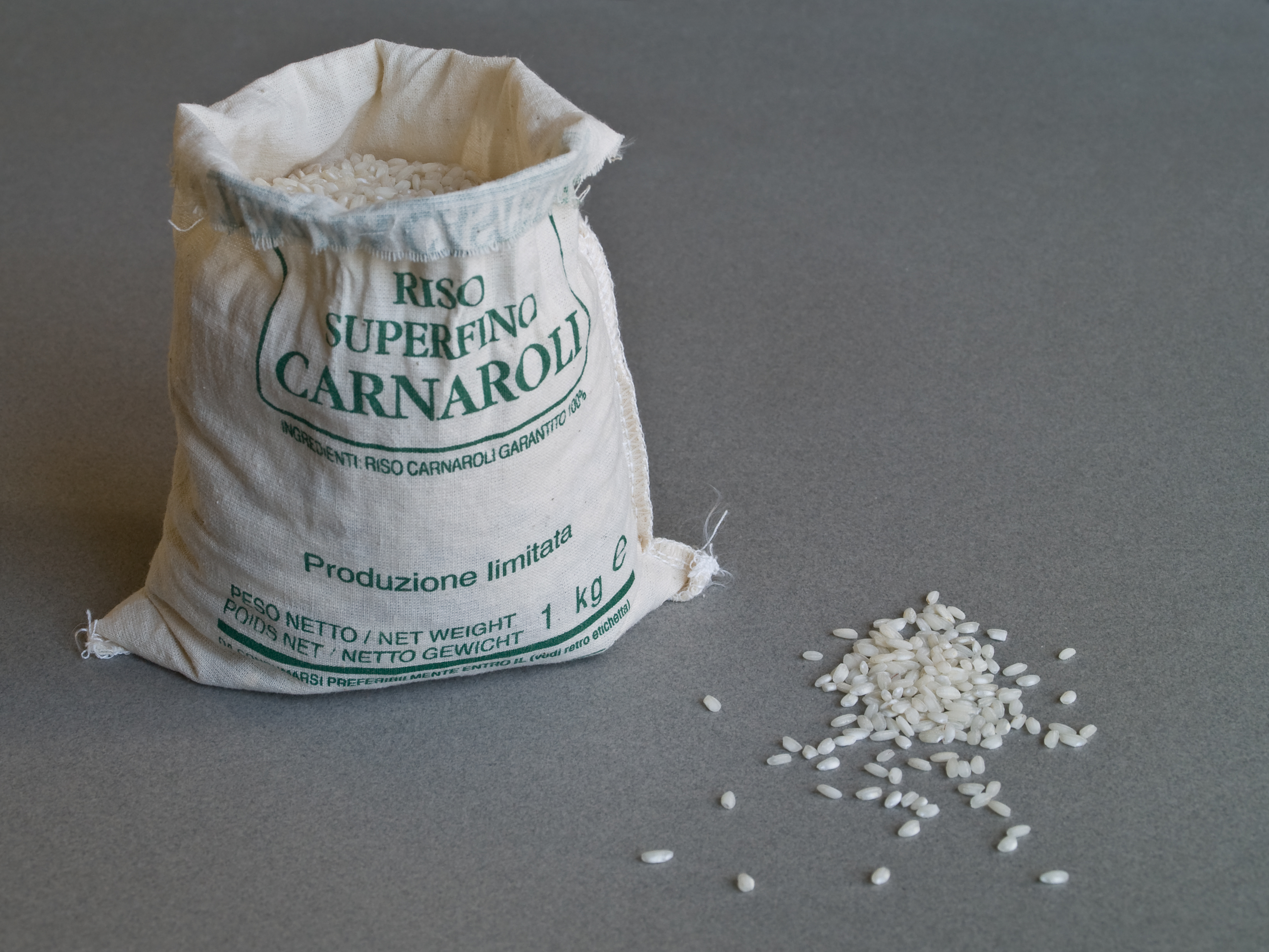
Carnaroli rice gets called the “caviar of risotto rices,” and honestly, it’s hard to argue.
It’s mostly grown in Northern Italy’s Piedmont region and is a favorite of chefs who want the best.
What’s the big deal? It’s got even more starch than Arborio, so you get a super creamy, velvety risotto.
The grains are medium-sized, from the japonica rice family—highly absorbent, mild, and they hold up well in the pot.
Carnaroli doesn’t fall apart easily, so your risotto stays al dente even if you get distracted for a minute. That’s a relief, right?
Key Characteristics of Carnaroli Rice:
- Extra starch (more than Arborio)
- Keeps its shape when cooked
- Medium grains
- Super creamy texture
- Mild flavor, soaks up whatever you throw at it
Some top Carnaroli brands like Riso Acquerello age their rice for extra flavor.
They say it gives you “the nutrients of brown rice and the easiness to cook of white rice.” Sounds good to me.
If you’re buying Carnaroli, look for vacuum-sealed packs to keep it fresh. It’s gluten-free and non-GMO, so most people can enjoy it.
For risotto, toast it first, then slowly add broth. It’s pricier than Arborio, but if you’re making something special, it might be worth it.
Bomba Rice (Spanish Short-Grain For Paella)

Bomba rice—sometimes called Valencia rice—is the secret to proper paella.
It’s a short, round grain with a pearly look, and it’s not really like the others.
The magic of Bomba? It can absorb three times its weight in liquid and still keep its structure.
That’s a big deal for paella, where you want the rice to soak up all those flavors but not turn to mush.
With about 25-30% amylose, it’s got low moisture content, so the grains stay separate after cooking—no sticky clumps.
Where It Grows:
- Mainly in Spain’s Valencia region
- Also in Calasparra, up in the Murcia mountains
- And in the Albufera area near Valencia
Cooking Properties:
- Absorbs flavors like a champ
- Holds its texture all the way through
- Never gets sticky or mushy
- Stays whole even if you overdo it a bit
If you can’t get your hands on real Bomba, Arborio is sometimes used instead.
But, heads up—Arborio tends to stick a lot faster than Bomba, so it’s not quite the same.
Bomba rice’s unique qualities make it worth hunting down if you want to make paella the way it’s meant to be—flavorful, with each grain perfectly cooked and distinct.
Valencia Rice (Spanish Medium-Grain For Paella)
Valencia rice covers a handful of medium-grain rice varieties grown around Spain’s Valencia region.
These grains are the backbone of authentic paella—no surprise there.
The most well-known is Bomba rice, recognized for its pearly look and short, round grains.
It’s kind of famous for how it cooks—soaks up flavor like nothing else, yet doesn’t fall apart.
Other local favorites are Senia and Bahia. Both are solid choices for classic Spanish dishes and tend to be a bit easier on the wallet than Bomba.
What sets Valencia rice apart? It’s all about how much flavor it absorbs.
These grains can take in up to three times their own volume in liquid and still hold their shape. That’s pretty wild when you think about it.
Chefs love that Valencia rice keeps its grains separate and doesn’t go gluey—unlike, say, risotto rice.
It’s a small detail, but it makes a world of difference in the final dish.
Struggling to find the real deal? Arborio can pinch-hit, but if you’re chasing that authentic paella experience, Calasparra or Bomba are the go-to options.
You can usually find Valencia rice online at specialty shops. Something like Matiz Valenciano Paella Rice lets you bring a little bit of Spain to your own kitchen.
Calrose Rice (Medium-Grain California Rice)
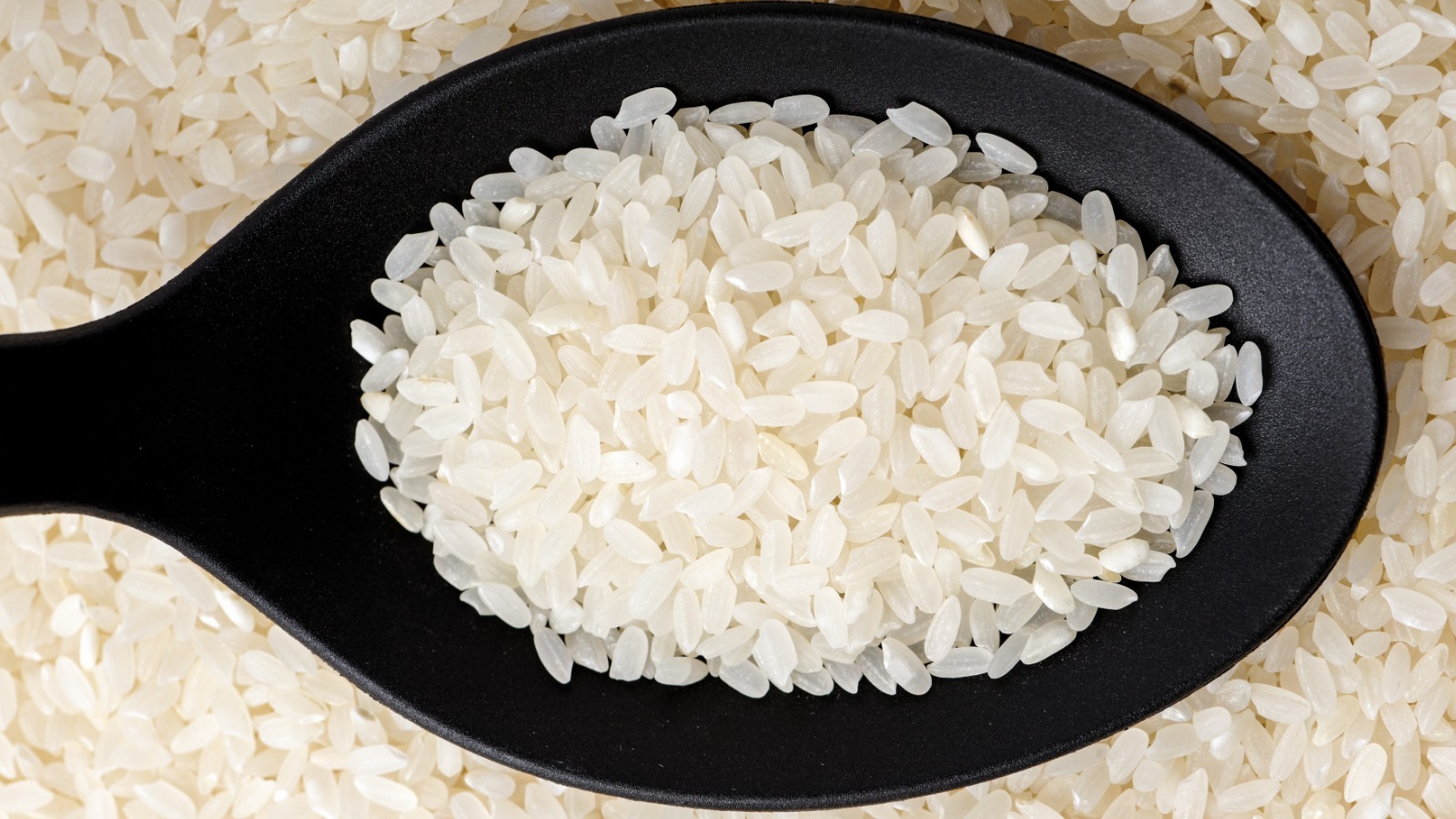
Calrose rice is a medium grain rice variety that basically put California rice farming on the map.
It’s got a few quirks that have made it a staple in kitchens well beyond the West Coast.
Cook it right, and Calrose turns out soft and a little sticky, which makes it crazy versatile.
That’s probably why it shows up in everything from sushi to rice bowls to stir-fries.
Calrose grains are plump, round, and kind of clingy after cooking—ideal for dishes where you want the rice to stick together but not turn into mush.
Key Features of Calrose Rice:
- Medium grain size
- Gets sticky after cooking
- Soaks up flavors nicely
- Absorbs liquid well
- Stays decent in the fridge
This rice was the original California variety, and honestly, it’s still everywhere out West.
If you’ve had rice at a California restaurant, there’s a good chance it was Calrose.
People often compare Calrose to Japanese rice—fair, but not quite the same.
Japonica rice comes in different grain sizes, while Calrose is always medium and round.
If you want the best texture, rinse Calrose before cooking to wash off the extra starch.
Usually, a 1½ to 1 water-to-rice ratio works, but hey, everyone’s got their own method.
Japanese Short-Grain (Sushi Rice)
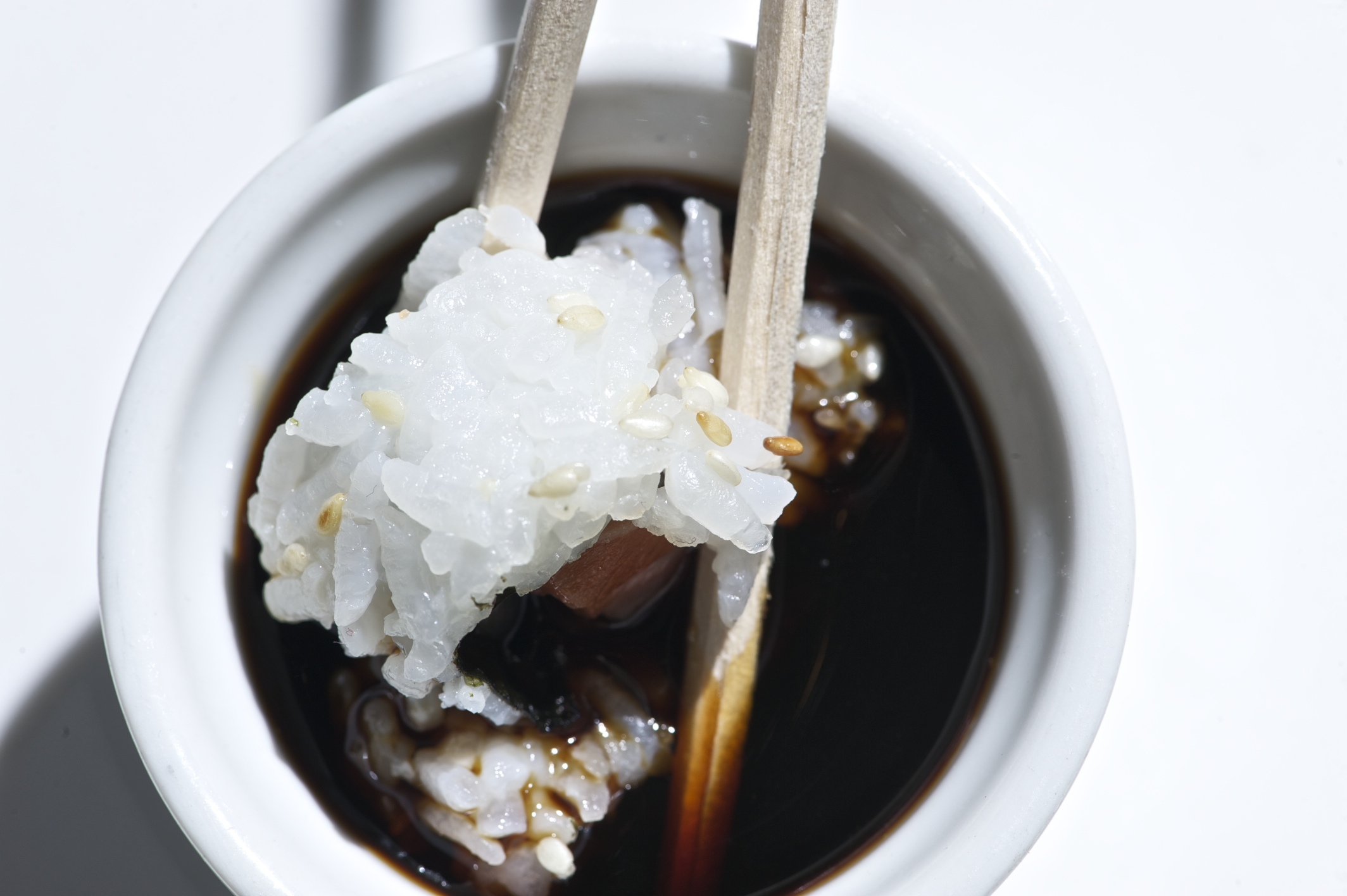
Japanese short-grain rice—what most folks call sushi rice—is the heart of Japanese food.
It falls under the Japonica umbrella, so you get those short, plump grains that go sticky when cooked.
Compared to long-grain rice, these grains are shorter and rounder.
Once cooked, they’re moist and sticky—just right for picking up with chopsticks or shaping into sushi.
It’s funny how the texture just works for everything from rice balls to simple bowls of plain rice.
It’s worth mentioning: “sticky rice” isn’t quite the right term here. True sticky rice is a different thing, even if the texture is similar.
Popular Japanese Rice Varieties:
- Koshihikari
- Sasanishiki
- Akitakomachi
- Hitomebore
If you’re buying Japanese rice, look for labels like “sushi rice” or “Japanese rice.”
Calrose can stand in, but it’s not quite the same as the real deal from Japan.
To make proper sushi rice, you season the cooked grains with a mix of rice vinegar, sugar, and salt. That’s what gives it that signature flavor and shine.
The stickiness comes from lots of amylopectin starch, which is why it clings together so well.
That’s what makes it perfect for sushi, onigiri, and all those classic Japanese bites.
Glutinous/Sticky Rice (High-Starch Asian Variety)
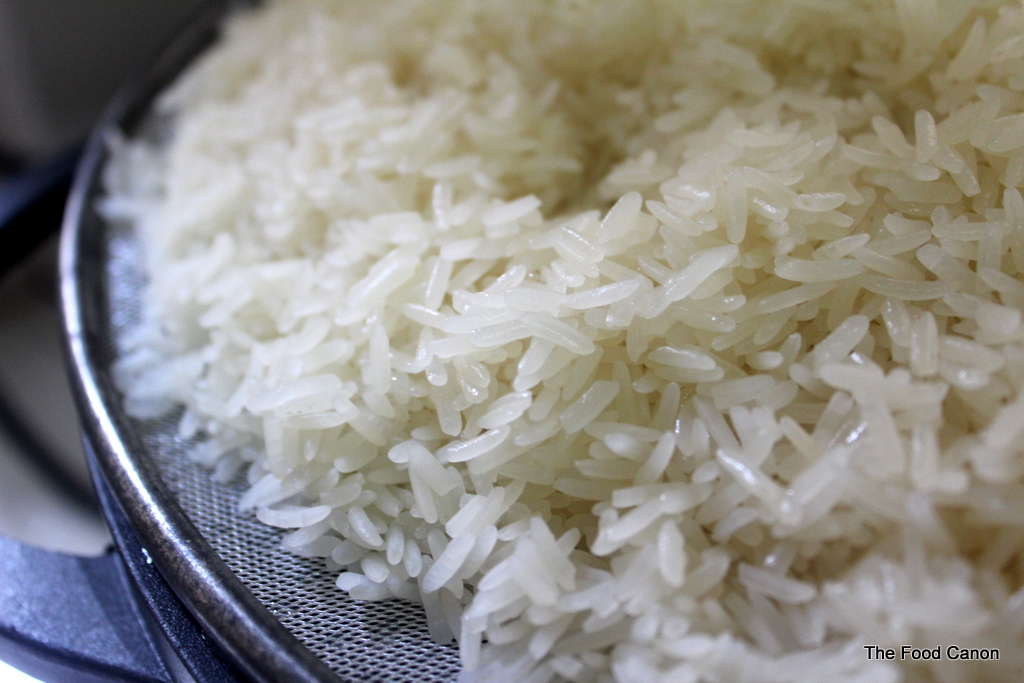
Glutinous rice—sometimes called sticky rice or sweet rice—is a short-grain variety that gets super sticky when cooked.
Despite the name, there’s no gluten here; it’s the amylopectin starch that does the trick.
This rice is a staple across Asia—think Thailand, Laos, chunks of China.
When you prep it right, the grains stick together so you can eat with your hands or chopsticks, no problem.
Characteristics of Glutinous Rice:
- Opaque white when raw
- Ultra-sticky after cooking
- Short, stout grains
- Mildly sweet flavor
Cooking it takes a little extra effort—usually a long soak, then a steam in a bamboo basket.
Some people just use a rice cooker with a bit of trial and error on the water ratio.
Glutinous rice falls under the japonica subspecies, and there are loads of cultivars.
Some of the best, like Koshihikari or Yumegokochi, are prized for their stickiness and subtle flavor.
It’s everywhere in Asian cooking—savory, sweet, you name it. Thai mango sticky rice, Vietnamese rice cakes, Chinese zongzi… the list goes on.
The way glutinous rice holds together is all about its high starch content.
That’s what makes it work in recipes where you need the rice to stick, not just the way you cook it.
Black Rice (Forbidden Rice, Purple When Cooked)
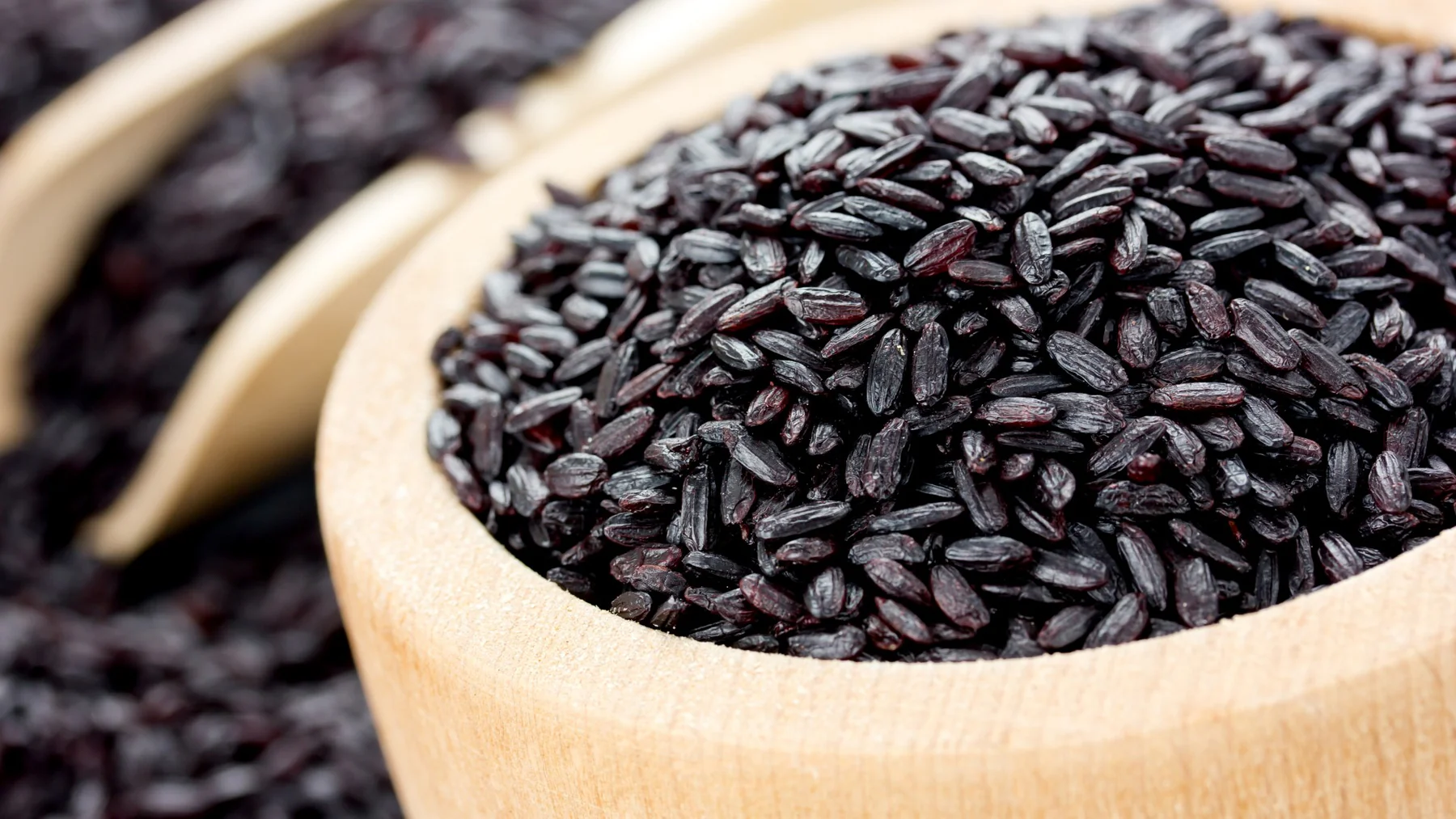
Black rice, sometimes called forbidden rice, is one of those grains that just grabs your attention.
It starts out jet black, but after cooking, you get a dramatic purple color—honestly, it’s kind of stunning.
The dark hue comes from anthocyanins, the same antioxidants you see in blueberries and eggplant.
That’s what gives black rice its purple tint and a bit of extra nutritional punch.
Back in the day, black rice was supposedly reserved for Chinese royalty—hence “forbidden rice.”
Regular folks weren’t allowed to eat it, which sounds wild now but gives it a bit of mystique.
Nutritional Benefits:
- More protein than brown rice
- Loaded with iron and fiber
- Packed with heart-healthy antioxidants
- Gluten-free by nature
Cooking black rice takes a little patience—usually about 30-35 minutes.
The typical ratio is one part rice to two parts water, but you might need to tweak it depending on the variety.
Some people like to mix black rice with white (about 1:3) for a pretty purple blend that’s more budget-friendly but still packs in nutrients.
Don’t be surprised if your cooking water turns purple. Totally normal—the color just leaches out as it cooks.
Flavor-wise, black rice is a little nutty and sweet. It’s great in savory dishes or desserts, and pairs especially well with coconut milk, tropical fruits, or even just a bit of salt and sesame oil.
It’s one of those grains that’s as fun to eat as it is to look at.
Red Rice (Various Varieties With Red Bran)
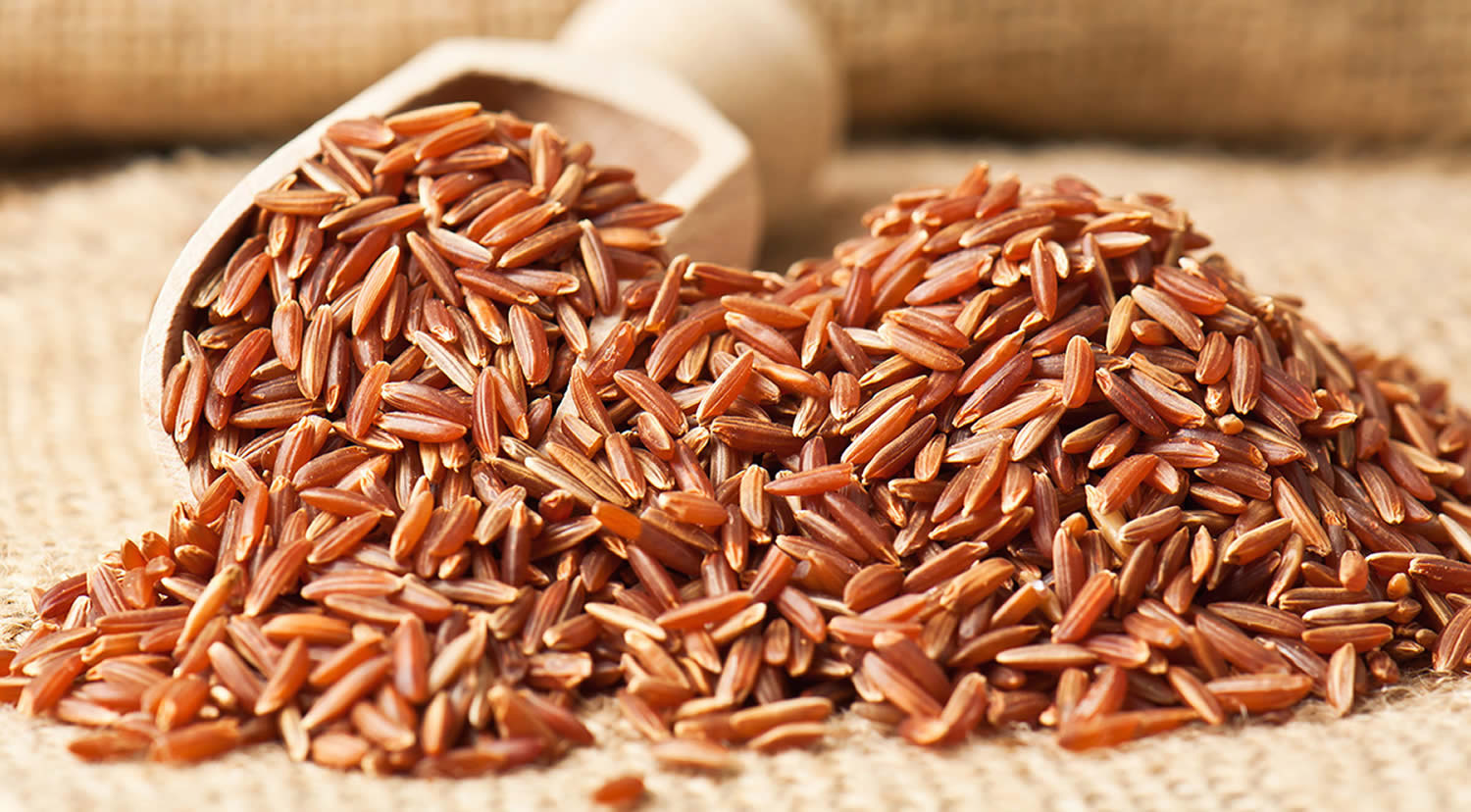
Red rice gets its distinctive color from anthocyanins in the bran layer.
These natural pigments give the rice a reddish-brown appearance and boost its nutritional value.
There are quite a few varieties of red rice grown around the world.
In Malaysia, you’ll hear about types like Udang Besar, Udang Halus, Silah Merah, and Katek Merah.
Some other Malaysian red rices are MRQ98, MRQ99, MRQ100, and UKMRC-9.
Thai red cargo rice pops up a lot in Southeast Asian cooking. It’s chewy, has a nutty bite, and fits into both sweet and savory recipes.
Himalayan red rice, grown in the foothills of the Himalayas, has an earthy, rustic taste and keeps its color nicely after cooking.
Red rice is pretty good for you, too:
- High in fiber
- Rich in antioxidants
- Contains essential minerals
- Helps lower LDL (bad) cholesterol
- Supports weight management
Scientists are still tinkering with red rice varieties, trying to boost flavor and nutrition by borrowing genes from wild relatives.
It’s a work in progress, but kind of exciting if you’re into rice genetics.
Cooking red rice takes patience—usually 30-40 minutes—since those grains hold onto their chewiness even when tender.
If you’re bored with brown rice, red rice swaps in easily. Its bold flavor really stands up to punchy ingredients like garlic, ginger, or lots of herbs.
Brown Rice (Any Rice With Bran Layer Intact)
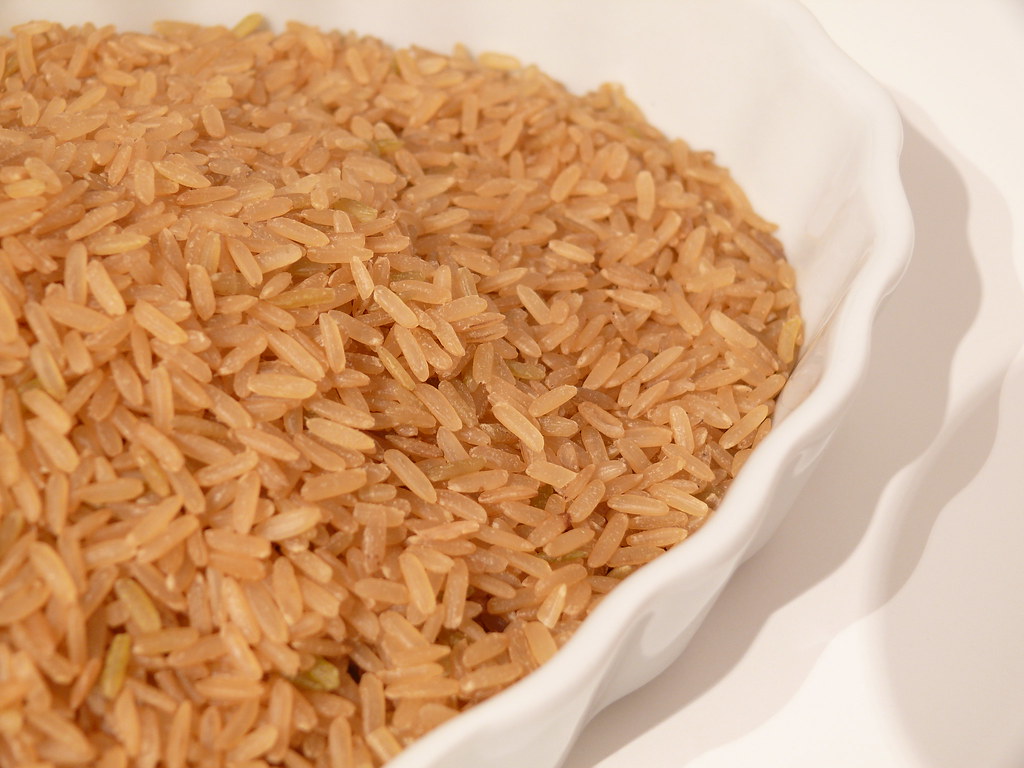
Brown rice is just rice with the outer husk removed, leaving the nutrient-rich germ and bran intact.
That’s why brown rice has its tan color and that familiar nutty flavor.
Since it keeps the bran layer, brown rice has a chewier bite and a richer taste than white rice. Some folks swear by it for that reason alone.
Brown rice comes in all the usual shapes—long, medium, or short-grain.
You’ll notice each cooks a little differently, just like with white rice.
Common Types of Brown Rice:
- Long-grain brown rice (fluffy, separate grains)
- Medium-grain brown rice (slightly sticky)
- Short-grain brown rice (stickiest variety)
- Brown basmati rice (aromatic)
- Brown jasmine rice (fragrant)
Expect brown rice to take its time—usually 35-45 minutes to cook, compared to the 15-20 minutes for white rice. The bran just slows things down.
The bran and germ layers mean brown rice is more nutritious than white rice.
That’s where the fiber, vitamins, minerals, and antioxidants are hiding.
Most people use a 2:1 water-to-rice ratio for brown rice. That nutty, chewy texture works great in grain bowls, stir-fries, or hearty rice salads—basically, anywhere you want the rice to hold its own.
Wild Rice (North American Aquatic Grass Seed)
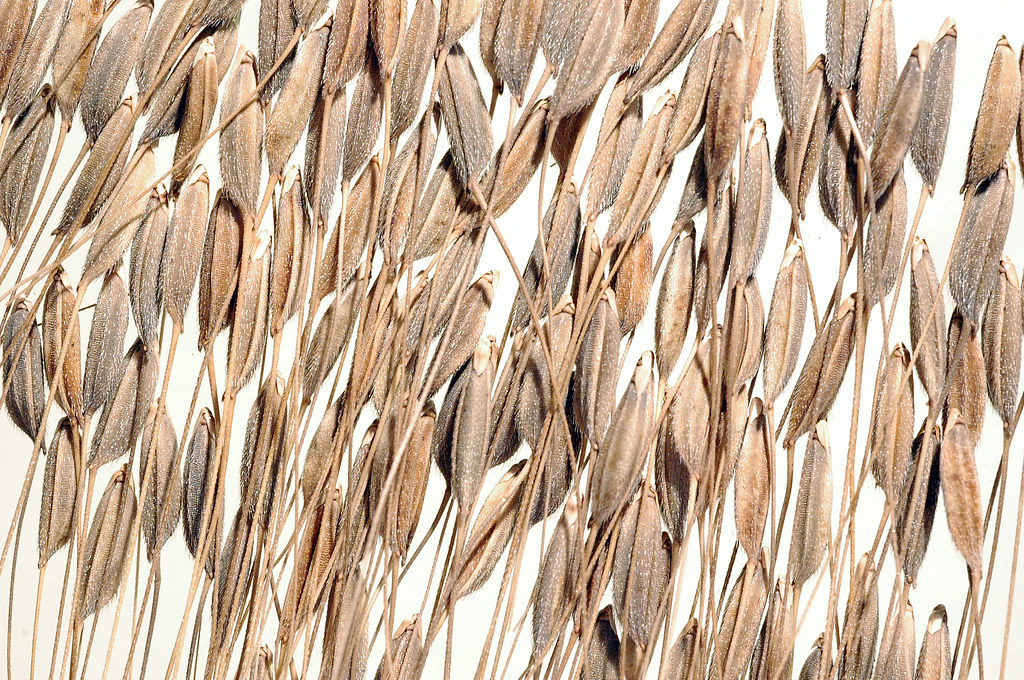
Wild rice isn’t technically rice. It’s the seed of an aquatic grass from the Zizania genus, native to North America.
Also called manoomin, Canada rice, or even water oats, it’s been a staple for indigenous communities for generations.
There are four main Zizania species that produce what we call wild rice.
These grasses grow in shallow lakes and slow-moving streams, and honestly, they look pretty striking in the wild.
Wild rice stands out with:
- Long, slender black or dark brown grains
- Firm, chewy texture even after cooking
- Glossy, almost shiny exterior
The taste is bold and nutty, with earthy undertones—definitely more complex than your average white or brown rice.
Some people love it, others aren’t sure what to make of it at first bite.
This North American native grain mainly grows in Minnesota, California, and parts of Canada.
Traditional harvesting means paddling through rice beds and gently knocking seeds into a canoe—kind of a beautiful process, honestly.
Most wild rice on shelves is cultivated, but you can still find the hand-harvested stuff if you look. It’s pricier, but some say the flavor is worth it.
Cooking wild rice takes more water and more time than regular rice.
It’s fantastic in soups or pilafs where those chewy grains can really shine.
Carolina Gold Rice (Historic American Heritage Rice)
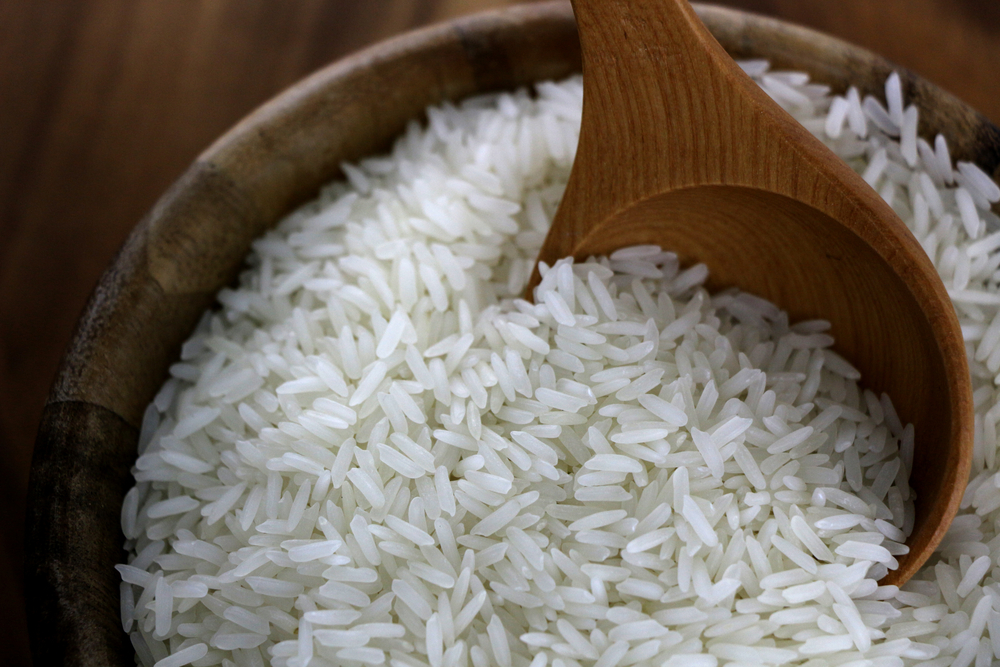
Carolina Gold Rice is the grandmother of long-grain rice in the Americas.
Its golden hue and delicate flavor make this historic grain a bit of a legend in American culinary history.
It was once America’s most popular rice and the first to be grown commercially in the U.S., especially in the Carolina Lowcountry, where the climate just seemed to suit it perfectly.
This rice is a bit of a chameleon. Depending on how you cook it, it can turn out fluffy, creamy, or even sticky.
That versatility is part of why chefs and home cooks love it.
Key Characteristics:
- Medium-grain variety
- Non-aromatic flavor profile
- Distinctive golden color
- Versatile cooking properties
If you want the real deal, look for Carolina Gold grown in the Carolinas. There’s something to be said for regional authenticity.
These days, Carolina Gold is making a comeback thanks to small producers.
Tidewater Grain Co. and others are keeping the tradition alive, even selling it in brown rice form for the purists.
There’s also Long Gold, considered the most historic version of Carolina Gold Rice.
It was first found in Georgetown County, South Carolina, and it’s about as old-school as it gets.
Parboiled Rice (Partially Pre-Cooked In Husk)
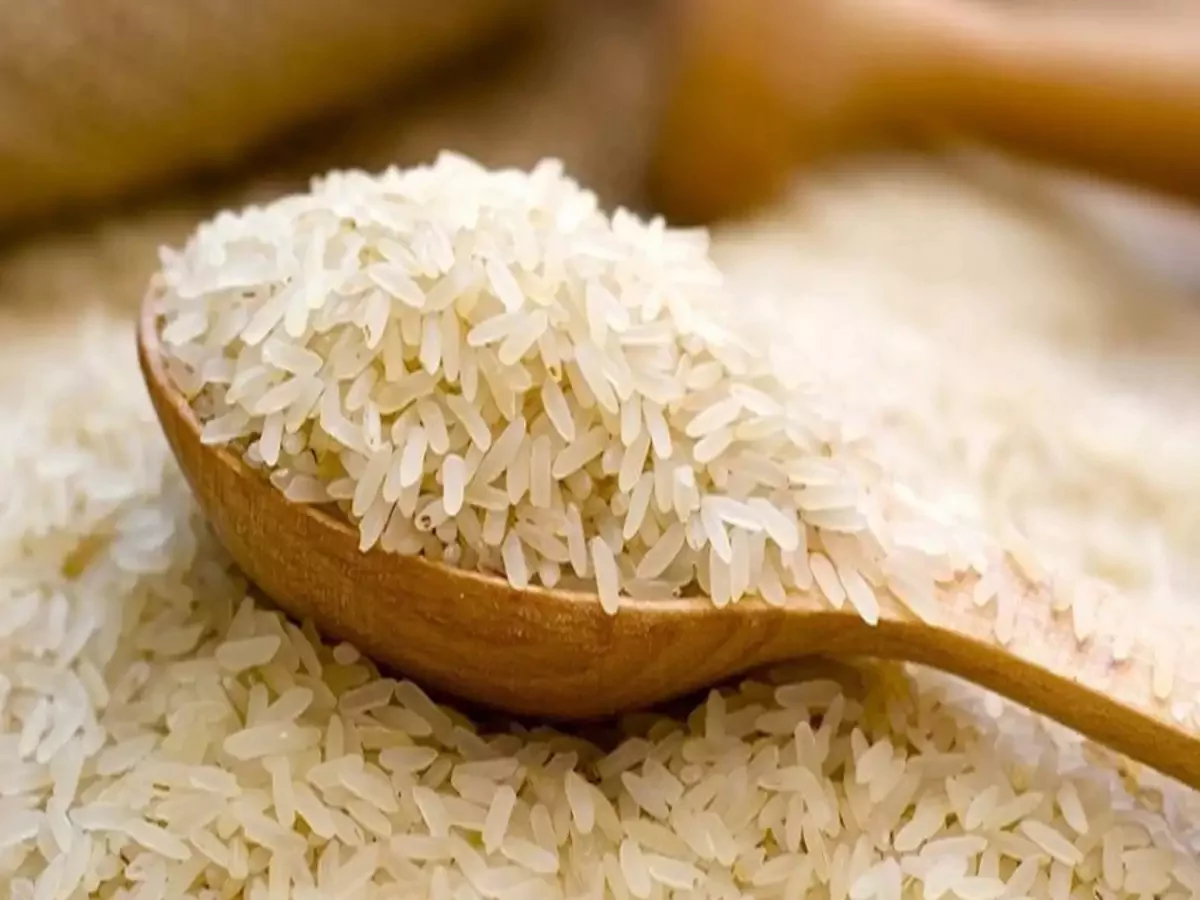
Parboiled rice is a little different from your everyday rice. It’s partially boiled while still in the husk, thanks to a special process that happens before it even gets to your kitchen.
You might hear it called “converted rice,” “easy-cook rice,” “sella rice,” or even “miniket.”
The parboiling gives it a slightly yellow or gold tint that’s pretty distinctive.
What’s the point of parboiling? Here’s what it does:
- Preserves more nutrients than regular white rice
- Keeps the grains firmer and less sticky
- Speeds up cooking
- Extends shelf life
During parboiling, nutrients from the husk and bran layer move into the kernel, making parboiled rice a healthier pick than plain white rice.
Don’t confuse parboiled rice with instant rice—that stuff is fully cooked and dehydrated. With parboiled, you’re still actually cooking it from scratch.
The texture is fluffier and less sticky, so it’s easier to get those nice, separate grains.
That’s why it’s often used for rice salads, pilafs, or fried rice—any dish where you want the grains to stand apart.
Rosematta Rice (Kerala Red Rice)
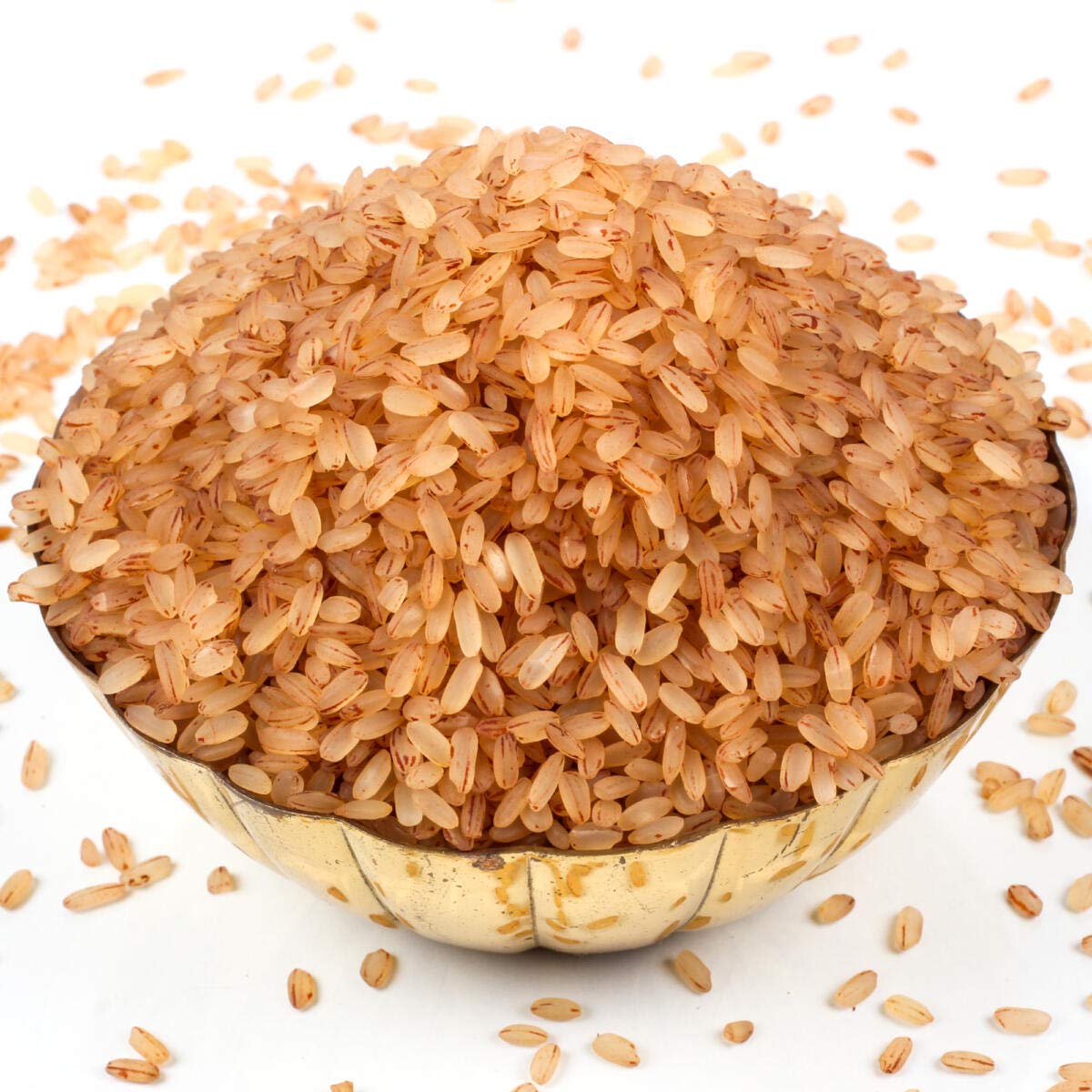
Rosematta rice, also called Kerala red rice or Palakkadan Matta rice, is a coarse, bold-grained rice that stands out with its reddish-brown color.
That red tone comes from the natural pericarp around each grain.
It’s native to Kerala’s Palakkad region in South India, and you’ll see it everywhere in Kerala cuisine.
The grains look robust, and there’s a slightly earthy aroma that’s pretty unique compared to standard white rice.
Rosematta rice is chewy and nutty. A lot of folks say it keeps them fuller than white rice, so it’s a satisfying pick for big meals.
Nutrition-wise, Rosematta rice has the edge over polished white rice.
It’s more nutritious since it’s less processed and keeps more of its natural goodness.
Unlike totally polished rice, Rosematta is parboiled, which helps lock in nutrients and makes it easier to cook.
The result is a texture that holds up well in curries and traditional Kerala dishes.
Key Characteristics of Rosematta Rice:
- Bold, coarse grains with reddish-brown color
- Nutty flavor and chewy texture
- Parboiled processing method
- Higher nutritional value than white rice
- Traditional staple in Kerala cuisine
Wehani Rice (American Aromatic Brown Rice)

Wehani rice is a unique aromatic brown rice developed in the late 20th century in the United States.
Sometimes you’ll hear it called California Red Jasmine Rice, which hints at its roots out West.
This distinctive rice has a striking honey-red color that really stands out on the plate.
Cook it, and suddenly your kitchen smells like popcorn or maybe even fresh-baked bread—pretty inviting, honestly.
Wehani was naturally bred from an Indian Basmati-type seed, resulting in a long-grain variety with a taste and texture that’s a bit of an experience.
The grains split open as they cook, which gives dishes a rustic, almost wild look.
Nutritional Benefits:
- High in fiber
- Contains essential minerals
- Whole grain goodness
- Rich in antioxidants
Plenty of chefs love Wehani for its nutty flavor and chewy bite. It’s a great match for hearty stews, roasted veggies, or grilled meats.
You’ll often spot Wehani in specialty rice blends with other types like long grain brown, sweet brown, or wild rice.
These combos are a nice way to shake up your usual rice routine.
Cooking Tips:
- Rinse before cooking to get rid of any extra starch
- Stick to a 1:2 rice-to-water ratio
- Let it simmer for 45-50 minutes
- Let it rest for about 10 minutes once it’s done
Just stash Wehani in an airtight container somewhere cool and dry, and it’ll stay fresh for ages.
Bamboo Rice (Short-Grain Infused With Bamboo Juice)
Bamboo rice isn’t actually grown on bamboo—kind of misleading, right? It’s a short-grain white rice infused with fresh bamboo juice, which gives it that pale jade green color and a flavor that’s pretty different from your usual rice.
The infusion leaves the rice with a herbal aroma and a mild, almost green tea-like flavor.
It’s subtle, but it’s there—plus, it looks beautiful on the plate.
When you cook it, bamboo rice stays light and tender, and that bamboo juice isn’t just for show—it brings some of the nutritional perks of bamboo, too.
Culinary Uses:
- Sushi and rice bowls
- Risotto with spring vegetables
- Side dish for fish or seafood
- Rice pudding with coconut milk
Bamboo rice cooks a lot like other short-grain types—usually a 1:1.5 rice-to-water ratio does the trick.
The green color holds up through cooking, so it really pops on the table.
The herbaceous, bamboo-y notes are a natural fit for Asian-inspired plates and seafood.
If you’re feeling adventurous, try it in arancini or as the base for a Buddha bowl—you might be surprised how well it works.
Keep it in an airtight container, somewhere cool and dry, and it’ll keep its flavor (and color) for a good long while.
Kalijira Rice (Bangladeshi “Baby Basmati”)
Kalijira rice, also known as baby basmati, is a special variety mostly grown in the Bengal region of Bangladesh.
The grains are tiny—hence the nickname—and aromatic, with a texture that’s pretty delicate.
It stands out for its fragrant aroma and the fact that it cooks up much faster than regular basmati. That’s a win on busy nights, honestly.
Kalijira is considered pretty precious due to its limited availability, which bumps up its price and makes it somewhat of a luxury in rice circles.
For cooking, most chefs suggest the pasta method—boil it in plenty of water, then drain—rather than the absorption method you’d use for most other rice.
This non-glutinous rice is a great swap for basmati in plenty of recipes, especially when you want something that feels a bit special or looks impressive on the table.
Cooking Properties:
- Fast cooking time
- Non-sticky texture when prepared right
- Delicate aroma
- Small, uniform grains
In traditional Bengali cooking, Kalijira rice is often reserved for special dishes and celebrations, where its aroma really shines and adds a little extra something to the meal.
Texmati Rice (American-Grown Basmati Hybrid)

Texmati rice is a bit of an American original, born from blending long-grain white rice and Basmati rice through some clever agricultural hybridization.
You get that classic Basmati aroma, but with the consistency and reliability of American-grown rice—kind of the best of both worlds, honestly.
It’s got a pleasant aroma and a texture that really stands out. When you cook it, the grains stay separate and fluffy, which, let’s be honest, is exactly what you want for so many recipes.
Key Characteristics:
- Light, fluffy texture
- Aromatic quality
- Separates well when cooked
- Toasty popcorn flavor
Texmati comes in both white and brown varieties. The brown Texmati option brings a bit more nutrition to the table, but still keeps that signature flavor that sets this rice apart.
People seem to love how flexible Texmati is. It fits right in as a base for veggie dishes, works in salads, or even finds its way into a creamy rice pudding if you’re feeling a little indulgent.
Popular Uses for Texmati Rice:
- Base for curries and stews
- Cold rice salads with nuts and dried fruits
- Side dish for grilled proteins
- Rice pudding and other desserts
Most Texmati rice you’ll find is gluten-free and non-GMO, so it suits a lot of diets.
Cooking it is pretty straightforward—just use a 1:2 rice-to-water ratio, like you would with classic Basmati.
